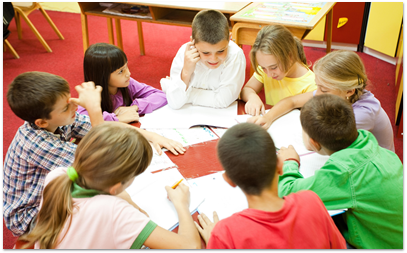The Problem
As the first-grade teacher for inquisitive six-year-olds, Emily Morse is always looking for new projects to inspire her students. With a recent culture shift in her district to increase STEM learning for students, Morse wanted to find new and creative ways to integrate STEM into various lessons for students to make it fun and engaging, and to instill an interest in science, but without making the lessons too advanced for the students.
Morse discovered that with Defined Learning, and its real-world connections, video on demand, and more, she could easily:
- Mix Defined Learning projects with her own lessons to bring the learning to a first-grade level
- Infuse a love of science, engineering, math, and more in her students that will resonate with them during their academic careers.
The Solution
Incorporate Defined Learning into the first-grade curriculum to successfully change the culture of teaching and learning in her classroom—and throughout the elementary school—to make STEM a seamless part of lessons for students.
For Halloween, in Morse’s first-grade class, her students were learning about pumpkins: how they grow, their colors and shapes, and engineering with pumpkins. Engineering for first graders? Absolutely, says Morse, who has been incorporating Defined Learning’s STEM resources with her first graders and finding surprising and reassuring results.
Engineering is woven within projects now. So basically “before, when we did units on pumpkins, we read a lot of literature around and about pumpkins, but never before did the science and engineering become a part of it,” says Morse, who has been incorporating Defined Learning into just about every theme unit with her students.

Congress is a rural school district 80 miles outside of Phoenix, AZ.
Now, in addition to reading about pumpkins and drawing pumpkins, students in Morse’s class work in pairs to build little towers out of gummy pumpkins and toothpicks. Frequently, Morse overhears conversations among her students, which include such observations as “It’s falling down. We need a stable base.”
For Morse, incorporating Defined Learning into her teaching has yielded richer conversations with her students and a more developed vocabulary among the six-year-olds.
Morse, who’s been teaching at Congress Elementary since 2008, has been supplementing her curriculum with Defined Learning since 2013.
“I just look at my curriculum and I go on Defined Learning and see what projects they have for grades K, 1, and 2,” she explains. “Anything for Kindergarten, I can make more difficult for my first graders, and anything for second grade, I can bring down to their level if I need to. So, I can easily see what projects there are, what I’m already using in my curriculum, and how I can integrate it.”
For example, for a unit on zoos, Morse incorporated a performance task called “Zoo Habitat” from Defined Learning to extend the learning for her students.
What’s also exciting for students is they also have a choice in what they learn with Defined Learning.
“Having the choices that Defined Learning gives them for different projects, they just become so much more engaged and take more ownership when they have that choice,” says Morse.
“Incorporating STEM lessons and overall thinking and learning has been a conscious culture shift for teachers at Congress Elementary School. The use of Defined Learning has made the process even that much more successful,” says Morse. The proof is in her students’ work.
“I see better work from them, more critical thinking, more thoughtful questions, stronger work,” says Morse. “It’s been a nice shift to see them learning and growing this way.”